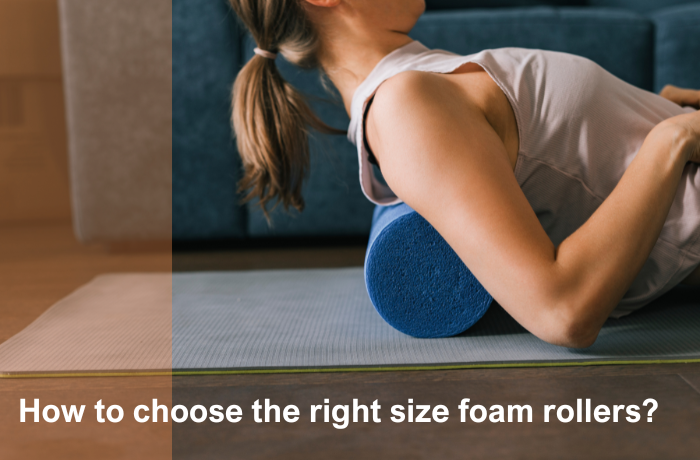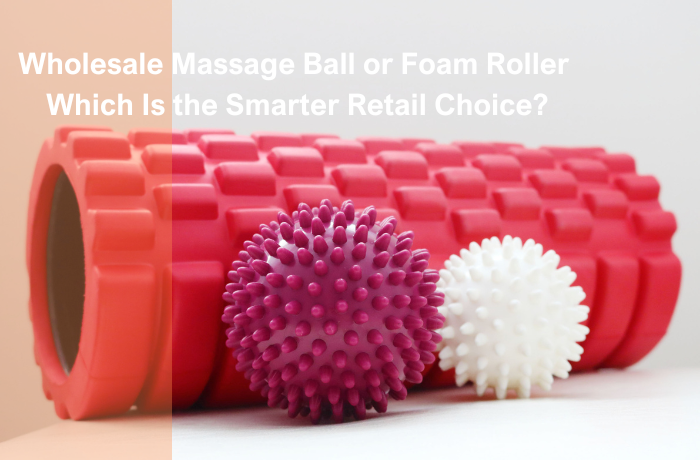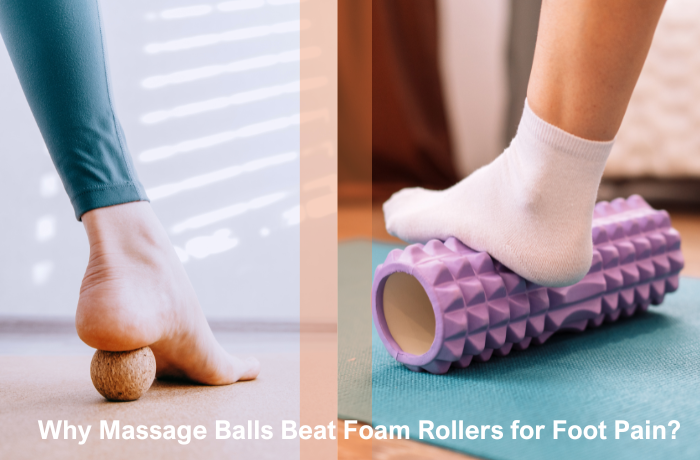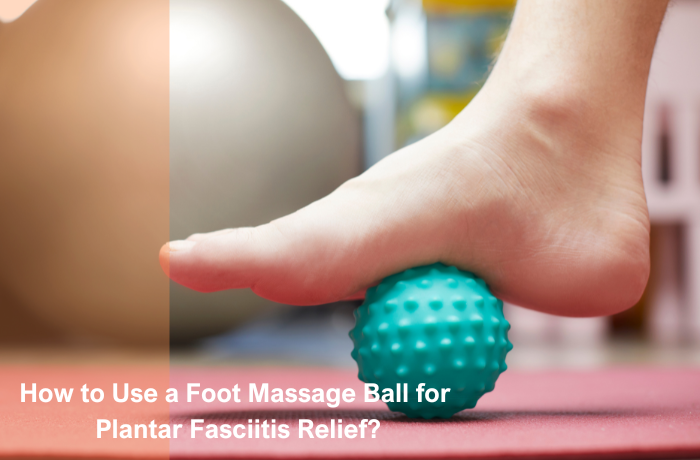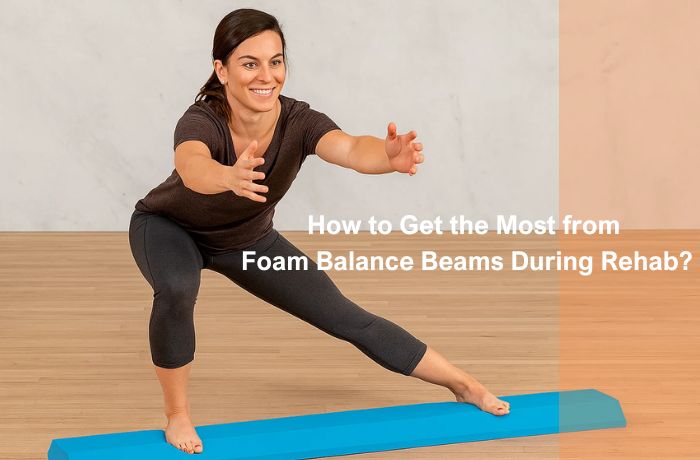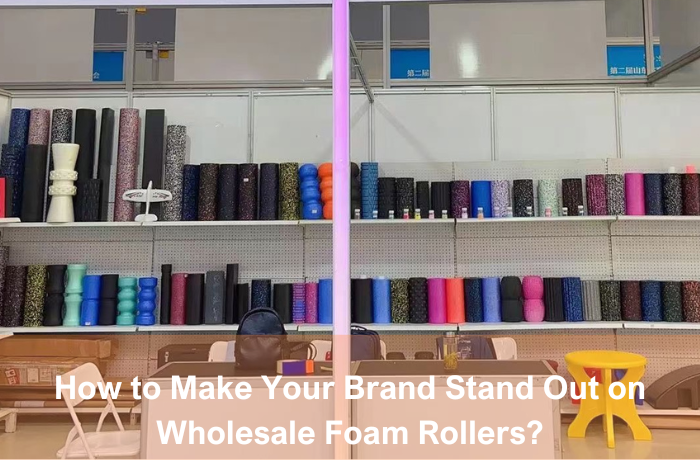Most people choose long foam rollers for full-body exercises and shorter foam rollers for targeted areas. You might find a 36-inch foam roller works well for your back, while a 12-inch foam roller fits smaller muscles like arms or calves. Your body type, fitness level, and goals will help you decide which foam rollers suit you best. Picking the right foam roller does not need to be hard. With a few simple tips, you can feel confident in your choice.
Key Takeaways
- Pick the foam roller length for your muscles. Long rollers (36-48 inches) are best for your whole body and back. Short rollers (12-18 inches) are good for small spots like arms and calves.
- Choose the foam roller diameter to change how deep the massage feels. A 5-6 inch roller gives soft, steady support. Smaller rollers (3-4 inches) press deeper and feel stronger.
- Pick the foam roller density for your comfort and needs. Medium or high density gives strong support for recovery and athletes. Low density is better for beginners and people with sore muscles.
- Use half-round foam rollers for balance, easy stretching, or spine support. These are good if you want less rolling or need more stability.
- Try foam rollers in the store or read online reviews. This helps you find the right size, firmness, and texture for your goals and body type. This will help your muscles recover better.
Foam Roller Size Guide
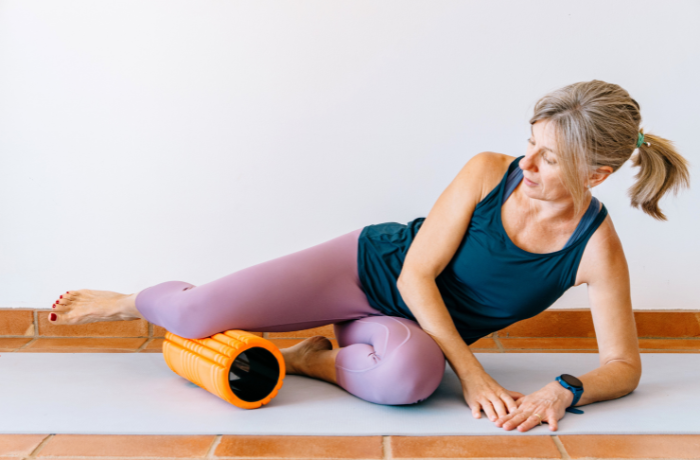
Length Options
When you choose foam rollers, you will notice several length options. Each length works best for different parts of your body and different types of exercises. Here are the most common foam roller sizes:
- 12-inch foam roller: This short roller fits well under your arms, calves, or feet. You can use it for small, targeted muscle groups. It also fits easily in a gym bag.
- 18-inch foam roller: This medium length gives you more room to roll out your legs or shoulders. It still works well for travel or small spaces.
- 24-inch foam roller: This size offers a balance between portability and coverage. You can use it for your back, thighs, or glutes.
- 36-inch foam roller: This long roller covers your whole back. You can use it for full-body exercises and core work. Many people use this length for Pilates or yoga routines.
- 48-inch foam roller: This extra-long roller works best for tall users, especially if you are over 6 feet. You can use it for full-body massage and stretching.
Tip: If you want to roll your entire back at once, pick a 36-inch or 48-inch foam roller. For smaller muscles, a 12-inch roller gives you better control.
Diameter Choices
The diameter of a foam roller affects how deep the massage feels. Most foam rollers have a diameter between 5 and 6 inches. This standard size gives you a stable base and a gentle massage. If you want a deeper massage, you can choose a smaller diameter.
- 5-6 inch diameter: This is the most common choice. You get a stable surface for balance and support. You can use this diameter for most exercises and stretches.
- 3-4 inch diameter: This smaller diameter lets you target deep muscle knots. You will feel a more intense massage. These rollers work well for athletes or people who want to reach tight spots.
Some foam rollers come in a half-round shape. You can use half-round foam rollers for balance training, stretching, or gentle massage. They do not roll as much, so you can use them for stability exercises or to support your spine during stretches.
Note: Foam roller density also matters. A high-density foam roller gives you a firm, deep massage. A low-density roller feels softer and works well for beginners or people with sensitive muscles. Always check the foam roller density before you buy.
You can find many foam roller sizes and shapes. Think about your goals and the muscles you want to target. The right length and diameter will help you get the most out of your massage routine.
Best Foam Rollers for Each Need
Full-Body Foam Rolling
If you want to roll your whole body, you need a long foam roller. A 36-inch foam roller is the most common size for this. It lets you roll your back, legs, and hips without slipping off. If you are taller than 6 feet, try a 48-inch foam roller. This longer roller gives you more room and comfort. You can use these rollers for rolling your spine, stretching your chest, or doing core moves.
Most people pick a 6-inch diameter for full-body rolling. This size keeps you steady and helps you balance. If you want a stronger massage, use a 4-inch diameter roller. This smaller roller pushes deeper into your muscles and helps with tight spots.
Tip: Pick a medium or high-density foam roller for full-body rolling. These types are firm and help your muscles recover and support you during exercise.
Targeted Areas
If you want to work on small muscles, like your arms, calves, or feet, use a short foam roller. A 12-inch or 18-inch foam roller fits under these areas and gives you more control. You can also use a half-round foam roller for gentle massage or balance practice. These rollers do not roll away, so you can use them for stretching or to help your spine.
Targeted foam rolling helps you recover faster after you exercise. Studies show that rolling certain muscles can make you less sore and more flexible. For example, research found that rolling your quadriceps made them less sore and helped you run faster within a few days. Another study showed that rolling made your knee move better right after you used the roller.
| Study / Measure | Numerical Statistic / Result | Time Point(s) | Effect on Muscle Recovery |
|---|---|---|---|
| Pearcey et al | Significant reduction in quadriceps muscle tenderness | 24 and 48 hours | Reduced muscle soreness |
| Pearcey et al | Improvement in sprint time | 24 and 72 hours | Enhanced physical performance |
| MacDonald et al | Knee joint ROM increase of 12.7% and 10.3% | 2 and 10 minutes | Improved range of motion (ROM) |
| Bradbury-Squires et al | Knee joint ROM increase of 10% (20s rolling) and 16% (60s rolling) | Immediately post-rolling | Dose-dependent ROM improvement |
| Sullivan et al | Sit-and-reach ROM increase of 4.3%, with an additional 2.3% for longer rolling | Immediately post-rolling | Improved flexibility |
These results show that targeted foam rolling helps your muscles recover and makes you more flexible. If you want a stronger massage for tight spots, pick a roller with bumps or a smaller diameter. This kind of roller helps you reach sore places and knots.
Beginners and Athletes
If you are new to foam rolling, start with a medium-density foam roller. This type is firm but not too hard, so you can get used to it. A smooth roller is good for beginners because it gives a gentle massage and helps you learn how to use it. The 321Strong and TriggerPoint Core foam rollers are good for people just starting. They are comfortable and support most exercises.
Athletes often need a stronger massage. You might want a high-density foam roller or one with bumps, like the RumbleRoller. These rollers press deeper into your muscles and help with tough knots. Some athletes use vibrating foam rollers for big muscles, but these are not as good for gentle or easy exercises.
Here is a table that shows how foam rollers do based on reviews and expert opinions:
| Metric | Description | Weight | Impact on Recommendations |
|---|---|---|---|
| Ergonomics | How well the roller fits and works with various body parts, affecting comfort and effectiveness. | 30% | Rollers like TriggerPoint Grid and 321Strong score high for versatility and comfort, suitable for multiple body parts. |
| Foam Density | Firmness and longevity of the foam; softer foams are gentler but less durable. | 25% | Softer rollers (e.g., TriggerPoint Core) recommended for tender areas; medium density (e.g., Brazyn Morph) for general use. |
| Topography | Surface texture such as knobs or smoothness, influencing massage depth and type. | 25% | Textured rollers like RumbleRoller provide deep tissue massage; smoother or moderate textures suit beginners or daily use. |
| Durability | Resistance to wear and tear under use. | 20% | Durable rollers like TriggerPoint Grid and RumbleRoller offer long-term value; vibrating rollers tend to be more durable. |
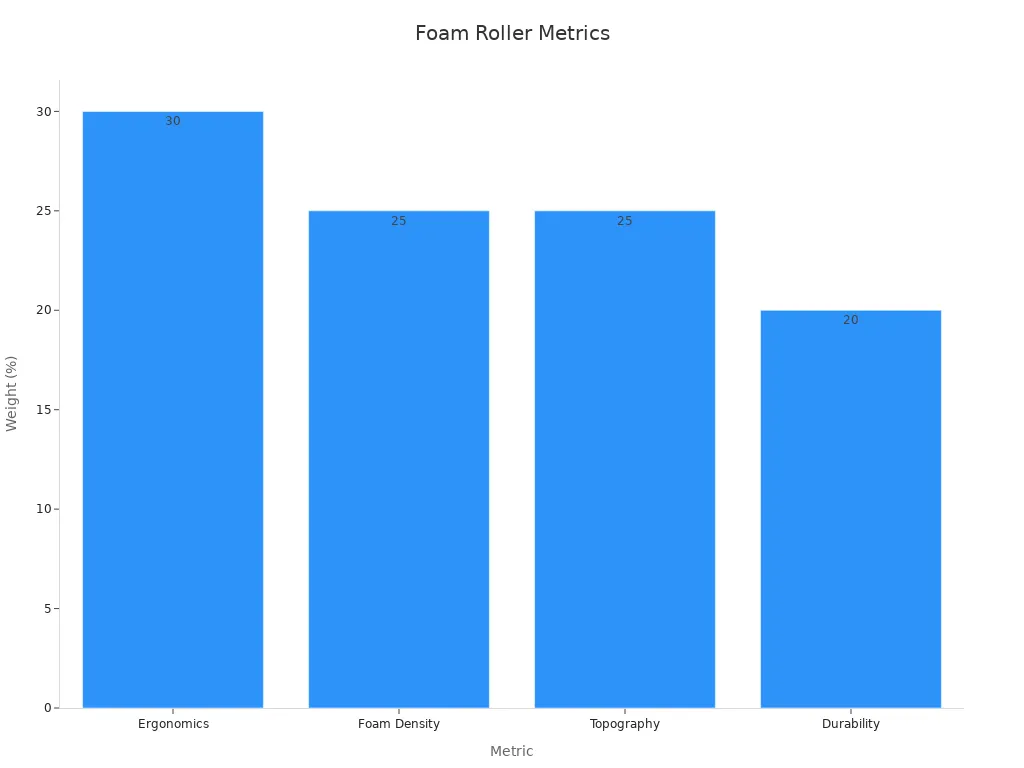
Travel and Rehab
If you travel a lot or need a foam roller for rehab, pick a small and easy-to-carry roller. A 12-inch or 18-inch foam roller fits in a suitcase or gym bag. Some brands make foldable or collapsible foam rollers, which save even more space. Vibrating foam rollers are also good for travel and rehab because they give a strong massage in a small size.
The market for travel and rehab foam rollers is getting bigger. Experts say the market will reach $250 million by 2033, growing 9.5% each year. People like these rollers because they are easy to use, not expensive, and help with muscle recovery at home or while traveling. Rehab centers and sports clinics also use foam rollers to help people heal from injuries and get more flexible.
| Aspect | Details |
|---|---|
| Market Size (2024) | USD 120 million |
| Projected Market Size (2033) | USD 250 million |
| CAGR (2026-2033) | 9.5% |
| Market Drivers | Increasing health consciousness, fitness trends, demand for affordable and versatile tools |
| Market Segmentation | By product type (foam, vibrating, travel rollers), material, application (including rehab), user type (physical therapy patients) |
| Key Market Dynamics | Portability, affordability, ease of use aligned with travel and rehab needs |
| Technological Advancements | Integration of vibrating rollers enhancing recovery effectiveness |
| Cross-industry Adoption | Rehabilitation centers, sports medicine, wellness clinics |
| Fitness Industry Context | Global wellness market valued at $4.5 trillion; fitness industry growing at 7.5% CAGR (2024-2029) |
| Consumer Trends | Rise in home-based workouts, injury prevention, muscle recovery practices |
| Regional Opportunities | Growth potential in Asia-Pacific, Latin America, Middle East due to rising health awareness |
Note: For rehab, use a low or medium-density foam roller. This type is softer and helps you avoid pain while you recover. If you need more support, try a half-round roller for gentle stretching and balance.
Foam rolling helps you recover from exercise, injuries, or travel tiredness. You can choose the right foam roller size and firmness for what you need, whether you want a deep massage or a gentle stretch.
Myofascial Release Benefits
Comfort and Effectiveness
Foam rolling for myofascial release can help your body feel better. It can also make it easier to move. Many people feel less pain and more flexible after a few times. You can use foam rolling to work on tight spots. This helps your muscles relax. Both athletes and regular people can use this technique. It is good for people who want to recover from daily activities.
Scientists have looked at how foam rolling and myofascial release help with pain and movement. Here are some key results:
- Randomized controlled trials show foam rolling can lower pain and help you move better for a short time. This works for healthy people and those with some health problems.
- Studies say people with plantar fasciitis feel less pain and move their ankles better right after foam rolling.
- Myofascial release with core exercises helps older adults with low back pain feel better.
- Systematic reviews say foam rolling looks good for pain relief and flexibility, but more studies are needed.
You can see how foam rolling helps your body in this table:
| Parameter/Study Aspect | Numerical Data / Result | Description / Protocol Details |
|---|---|---|
| Knee Range of Motion Improvement | Increase of 9° to 11° | Four 2-minute foam rolling sessions on quadriceps at 24–48 hour intervals |
| Daily Protocol Duration | 2 minutes daily for 1 month | Enhanced knee range of motion using foam roller on quadriceps |
| Foam Roller Density Comparison | Soft, Medium, Hard densities with Grid texture | All densities improved knee mobility and pressure pain threshold |
| Pain and Fatigue Reduction | Qualitative improvements reported | Rolling helps reduce pain sensations, fatigue, and muscle inflammation |
| Flexibility Improvements | Increased hamstring flexibility | Consistent with previous findings in healthy subjects |
Foam rolling can help with sore muscles and make you more flexible. It also helps you recover after exercise. Many people say foam rolling helps them relax and sleep better.
Choosing the Right Size
The right size foam roller makes myofascial release more comfortable and works better. Use a longer roller for big muscles. Pick a shorter roller for small areas or travel. The right size helps you control pressure and reach the muscles you want.
Think about your goals for recovery and massage when you pick a foam roller. A grid surface gives a deeper massage. A smooth roller feels softer. A firm roller gives a stronger effect. A soft roller feels more gentle. Many people find the right size and type helps them keep up with their recovery.
Tip: Try different foam rollers to find what feels best for you. You can start with a medium-density roller. Change it as you learn what works for your body.
Foam rolling and myofascial release can help you recover faster and lower pain. They also keep your muscles healthy. With the right size and way to roll, your massage routine can be easy and helpful.
How to Use a Foam Roller for Sizing?
In-Store Tips
Shopping for a foam roller in a store gives you a chance to test different sizes and shapes. You can see how each roller feels under your body. Place the roller on the floor and try a few simple moves. Roll your back or legs to check if the length covers the area you want. Stand the roller up to see if it reaches your mid-back or shoulders. This helps you decide if the roller fits your needs.
Physical therapy professionals often recommend full-size rollers between 26 and 36 inches. About half of experts prefer this size for most people. Shorter rollers work well for targeted areas. You can use the table below to compare expert preferences:
| Aspect | Findings from Physical Therapy Professionals |
|---|---|
| Preferred foam roller size | Full size (26-36 inches): ~50.5% |
| Half size (13-15 inches): ~18.4% | |
| Both sizes recommended: ~19.9% | |
| Recommended purchase location | Physical stores: ~41.3% |
| Generic websites: ~80.6% | |
| Manufacturer websites: ~25.7% |
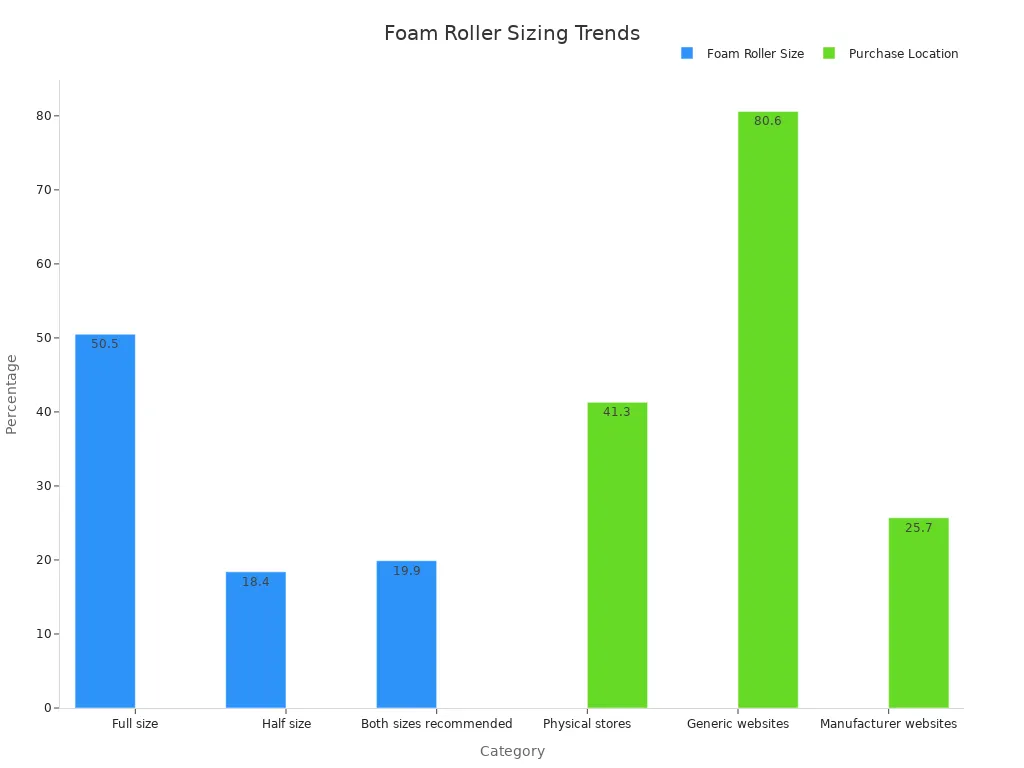
Tip: Ask a store staff member about how to use a foam roller for your goals. Try different densities to see what feels best. Remember to ask how long should you foam roll each muscle group for best results.
Online Shopping Tips
Buying a foam roller online can be easy if you know what to look for. Many websites offer detailed guides and user reviews. You can compare brands, sizes, and features before you buy. Here are some helpful tips from consumer surveys and expert reviews:
- Check the product description for size, density, and texture.
- Read user reviews to learn about comfort, grip, and noise.
- Look for brands that test firmness and provide clear measurements.
- Choose a roller based on your pain points, such as tight hamstrings or back soreness.
- Consider portability if you travel often. Some rollers fold or collapse for easy packing.
- Do not pick a roller just because it is cheap or popular in ads.
- Watch for video tutorials or guides on how to use a foam roller and how long should you foam roll for each area.
Note: Online resources often group rollers by use case, such as beginners, athletes, or travel. This helps you find the right fit for your needs.
Choosing the right foam roller size helps you get the most out of your routine. Whether you shop in-store or online, focus on your comfort and goals.
Foam Roller Comparison Chart
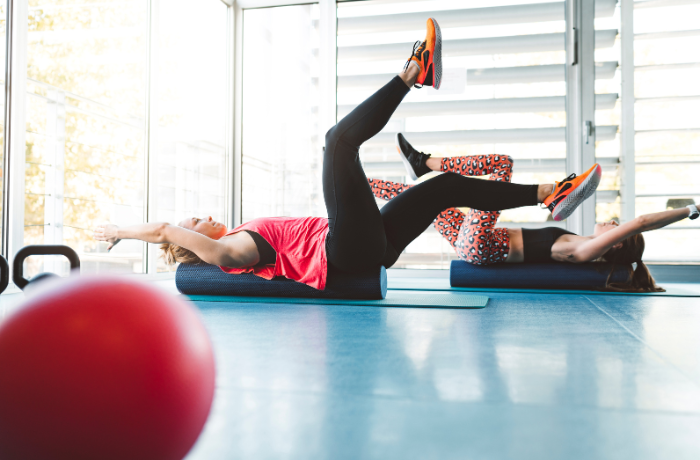
Picking the right roller can be tricky. Looking at a chart helps you see the choices fast. This chart lets you match the size and shape to what you need.
| Size Category | Length (inches) | Diameter (inches) | Typical Uses / Notes |
|---|---|---|---|
| Small | 4 | 4 | Good for small muscles, gives a deep massage, steady, easy to pack for trips |
| Short | 12 | 4 – 6 | Works for arms, calves, or feet, fits in bags, great for tight spaces |
| Medium | 24 | 4 – 6 | Works for most muscles, easy to carry, does not take up much space |
| Long | 31 – 36 | 5 – 6 | Best for your whole back, hips, and big muscles, very steady, needs more space |
| Common Diameters | N/A | 4, 5, 5.5, 6 | 6-inch is used most; 4-inch gives deeper massage and more balance |
You can also look at popular models to see what fits your routine best:
| Model / Type | Length (inches) | Diameter (inches) | Weight Capacity (lbs) | Foam Density | Notes / Uses |
|---|---|---|---|---|---|
| Trigger Roller | 31 | 6.3 | 500 | Firm | Works for most muscles, has a strong hollow center |
| 321 Roller | 13 | 5.5 | 500 | Medium | Good for small areas, has three massage zones |
| RumbleRoller | 12 / 22 / 31 | 5 / 6 | 500 | Extra-firm | Good for travel, mid-size for back or glutes, big size for legs |
Tip: If you want a roller for trips, pick a short or small one. For full-body moves, a long roller covers more and keeps you steady.
A chart like this helps you compare rollers easily. You can quickly find the best roller for your body and what you want to do.
Picking the right size foam roller helps you get better results. Studies say using the right size and pressure for your body helps you stretch more and recover faster. Scientists checked these results with good tests and enough people in their studies. Use this guide to choose a roller that matches your needs. Start now to move better, feel less sore, and feel more sure during exercise.
FAQ
What size foam roller should I use for my back?
A 36-inch foam roller works best for your back. This length supports your spine and lets you roll smoothly. If you are taller than 6 feet, try a 48-inch roller for more coverage.
Can I use a short foam roller for my legs?
You can use a 12-inch or 18-inch foam roller for your legs. These sizes fit well under your calves or thighs. You get better control for targeted muscle work.
Does foam roller diameter affect the massage?
Yes, diameter changes the feel. A 6-inch roller gives a gentle, stable massage. A 4-inch roller presses deeper into your muscles. Choose the one that matches your comfort level.
How do I know if my foam roller is too firm?
If you feel sharp pain or bruising, your roller may be too firm. Start with a medium-density roller. You can switch to a firmer one as your muscles adjust.
Are half-round foam rollers good for beginners?
Half-round foam rollers help with balance and gentle stretching. You can use them if you want less movement or need extra support. Many beginners find them easy to use.

